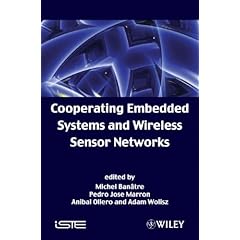Friday, March 20, 2009
"Web Meets World": User Experience of Embedded Systems and Interactive Wireless Sensor Networks...
In my opinion, HCI/Usability/UX intervention is sorely needed in the converging fields of embedded systems and wireless sensor networks. I fear what the future will hold if usability and user experience factors do not receive attention.
I think there is hope, despite my quote in a previous post about some usability issues related to the SmartGrid City project.
For a good overview of the future of sensor networks and ambient technologies, read the transcript of Tim O'Reilly's "Web Meets World" keynote presentation from the 2008 Web 2.0 Expo, or watch the video below:
O'Reilly asks, "What are our best and brightest working on?" and "Are we working on the right thing?" (He even touches on Richard Bookstaber's "A Demon of our own Design: Markets, Hedge Funds, and the Perils of Financial Innovation", a book published in 2007 that discusses how the best and brightest developed innovations that made investments more risky. We now know the outcome of those innovations!)
Summer Reading?!
A number of different system concepts have become apparent in the broader context of embedded systems over the past few years. Whilst there are some differences between these, this book argues that in fact there is much they share in common, particularly the important notions of control, heterogenity, wireless communication, dynamics/ad hoc nature and cost.
The first part of the book covers cooperating object applications and the currently available application scenarios, such as control and automation, healthcare, and security and surveillance. The second part discusses paradigms for algorithms and interactions. The third part covers various types of vertical system functions, including data aggregation, resource management and time synchronization. The fourth part outlines system architecture and programming models, outlining all currently available architectural models and middleware approaches that can be used to abstract the complexity of cooperating object technology.
I wonder how much of this book is devoted to usability and user-experience topics!
Graphics for Embedded Systems
Niall Murphy's PanelSoft : User Interfaces and Usability for Embedded Systems Articles
Dr. Kristof Van Laerhoven (Multimodal Interactive Systems)
TinyOS (free, open source operating system for wireless sensor networks)
Siftables: Physical, Natural Way to Interact with Information and Media
My post: Tangible & Fluid User Interfaces Part I: Siftables
Link to previous post:
The UX of SmartGridCity: Control Your SmartHouse Remotely, Online


No comments:
Post a Comment